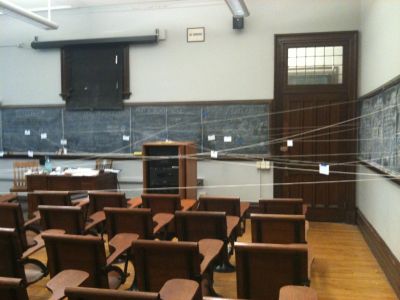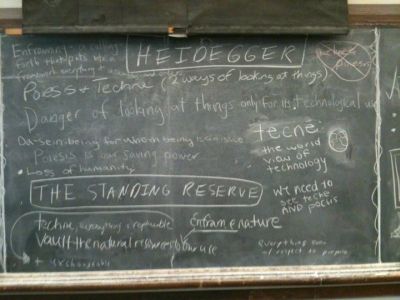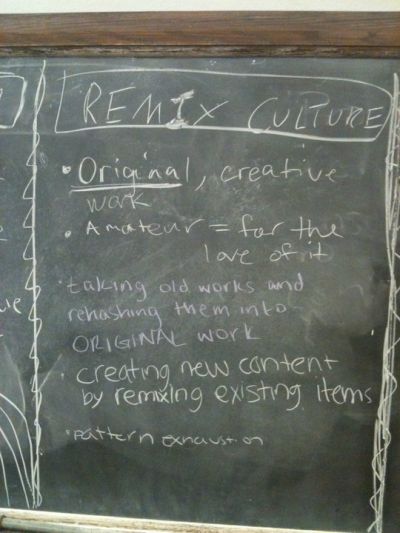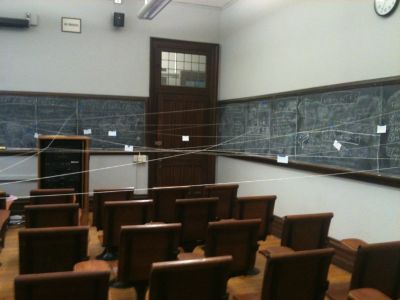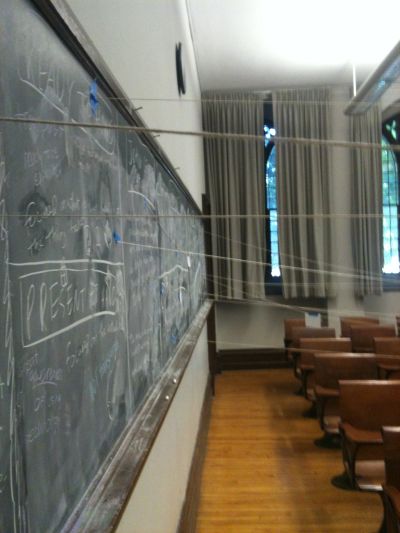Seeing Connections: A Class Project at CTY Princeton
Jon Lawhead (Columbia University)
In summer 2011, I (Andrew) worked as a teaching assistant for Jon Lawhead at the Princeton campus for the Johns Hopkins University's Center For Talented Youth. This webpage describes a class project that he and I designed for the students on their last day of class.
The course was called "Human Nature and Technology," and the students learned the theories of Aristotle and Descartes, as well as the theories of modern thinkers like Jaron Lanier and Clay Shirky. The course was remarkable in part because of how fascinating it could be to see each theorist's ideas in relation to the rest.
As the course progressed, Jon and I wondered aloud how we might better encourage our students to make connections between such diverse theories. Perhaps, given the chance, our students could come up with hundreds of associations that we had never even considered! What kind of class project could we create to help?
Jon and I started batting around ideas - brainstorming - and we came up with a way that the students could visibly represent theoretical connections between ideas. We created a project that would enable students to actually see connections between theories and interact with them directly using their senses. Between us, Jon and I had struck on something very cool! A class project, making a map or neural network of ideas. With writing, pictures, twine, and note-cards, the students created both two-dimensional and three-dimensional connections between various ideas from the class.
First Part
There were blackboards surrounding the classroom, and we broke the blackboard up into different sections. We labeled each section with the name of a theorist or idea - for example, "Descartes" or "Remix Culture." Then we encouraged the students, on their own, to write notes or draw pictures on the board that focused on these topics.
We had deliberately listed theorists on the board without regard for chronological order, and we broke ideas free from the theorists who had them. So, for example, "George Berkeley" was right beside "The Singularity," and "Heidegger" was next door to "Clay Shirky." As a result, as students put notes on the board, they were already able to begin seeing connections, not only between theorists and ideas from the same time period, but also between radically different theorists as well.
By the end of this step of the project, the students had a full review of the course on the blackboards, touching on many of the major figures and themes we had covered.
Second Part
Next, we encouraged the students to connect various ideas, written on the board, with lengths of twine. By taping one end of a piece of twine to one board, and the other end to a board across the classroom, they could make connections between anything in the room, no matter how far apart! And yes, too, they could connect ideas on the same blackboard in the same way. We also encouraged the students to describe each connection on a note-card, and tape that note-card to the appropriate length of twine. That way, anyone who encountered a length of twine might determine what it represented, and reflect on the connection that it drew.
Before the students began this step, we offered one or two examples of possible connections they might make. And then we let the students have at it!
As we had brainstormed this project, we had come to think of it like a model of a neural network. And the result, after the students had put up lengths of twine, really did resemble something like that, even if only in a very abstract, wild sort of way. We had successfully encouraged the students to see a number of different connections in the class, between theorists and ideas. And, to top it off, it had been a lot of fun.
A Side-Note
Initially, I was concerned that it might be difficult to duplicate a project like this. Overall, it probably took between an hour-and-a-half and two-hours, and it fully utilized the chalkboards which surrounded the classroom. With shorter class periods, fewer blackboards, and rooms shared between numerous classes, how could an instructor do something like this?
The best answer, I suspect, is: butcher paper. If notes and pictures were initially written and drawn on long lengths of paper, then you wouldn't need as much blackboard space. Instead, you could simply tape the lengths of butcher paper to the wall, and let students make their own connections. Likewise, if you used butcher paper, the project could be broken up over time. During one class section, the students could write or draw on the paper. Then, in another section, the instructor could return with the paper and let the students connect their ideas with twine.
Finally, on a different note, an instructor might choose to expand on our project idea and add additional complexity. With different colors of twine, for instance, the students might be able to organize and create different sorts of connections. Likewise, too, if an instructor can display digital photographs or video clips in addition to written notes, students might be able to draw connections between various kinds of media. Anything you can connect with twine!

Andrew Corsa (left) and Jon Lawhead (Right)
If you like, you can visit Andrew's "Creative Projects" Webpage
